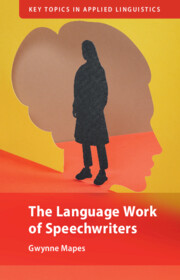Refine search
Actions for selected content:
301 results
Chapter 8 - The Ancient Background of Kant’s Conception of Virtue
-
-
- Book:
- The Aristotelian Kant
- Published online:
- 15 December 2025
- Print publication:
- 22 January 2026, pp 207-226
-
- Chapter
- Export citation
Chapter 10 - Kant on Habit and Time
-
-
- Book:
- The Aristotelian Kant
- Published online:
- 15 December 2025
- Print publication:
- 22 January 2026, pp 246-271
-
- Chapter
- Export citation
Chapter 23 - The Music of the Virtues in Late Antique Platonism
- from Part IV - Mathematics
-
- Book:
- The Ladder of the Sciences in Late Antique Platonism
- Published online:
- 08 December 2025
- Print publication:
- 08 January 2026, pp 310-323
-
- Chapter
- Export citation
17 - Virtues
- from Part II - Theological Themes
-
-
- Book:
- The Origins of Scholasticism
- Published online:
- 18 November 2025
- Print publication:
- 08 January 2026, pp 464-494
-
- Chapter
- Export citation
Chapter 10 - Hume’s Geography of Feeling in A Treatise of Human Nature
-
-
- Book:
- Hume's <i>A Treatise of Human Nature</i>
- Published online:
- 05 December 2025
- Print publication:
- 08 January 2026, pp 170-190
-
- Chapter
- Export citation
Chapter 11 - Some Vexations about Character in Hume’s Treatise
-
-
- Book:
- Hume's <i>A Treatise of Human Nature</i>
- Published online:
- 05 December 2025
- Print publication:
- 08 January 2026, pp 191-205
-
- Chapter
- Export citation
Chapter 6 - Ethics in Plotinus and His Successors
- from Part II - Ethics
-
- Book:
- The Ladder of the Sciences in Late Antique Platonism
- Published online:
- 08 December 2025
- Print publication:
- 08 January 2026, pp 77-97
-
- Chapter
- Export citation
In the Shadow of Democratic Violence
-
- Journal:
- Ethics & International Affairs / Volume 39 / Issue 3 / Fall 2025
- Published online by Cambridge University Press:
- 03 December 2025, pp. 206-214
-
- Article
-
- You have access
- Open access
- HTML
- Export citation
Does law bring virtue? Seneca and Paul on law, virtue and Christ
-
- Journal:
- Scottish Journal of Theology , First View
- Published online by Cambridge University Press:
- 17 November 2025, pp. 1-12
-
- Article
-
- You have access
- Open access
- HTML
- Export citation
Chapter 4 - Plato’s Definition of Tragedy
-
- Book:
- Plato on Comedy and Tragedy
- Published online:
- 24 October 2025
- Print publication:
- 13 November 2025, pp 125-163
-
- Chapter
- Export citation
Chapter 7 - Responding to Moral Heroism: Admiring, Honoring, and Commemorating
-
- Book:
- Moral Heroism without Virtue
- Published online:
- 23 October 2025
- Print publication:
- 06 November 2025, pp 162-188
-
- Chapter
- Export citation
Conclusion
-
- Book:
- Moral Heroism without Virtue
- Published online:
- 23 October 2025
- Print publication:
- 06 November 2025, pp 189-192
-
- Chapter
- Export citation
Chapter 5 - Sacrificing, Practical Necessity, and Supererogation
-
- Book:
- Moral Heroism without Virtue
- Published online:
- 23 October 2025
- Print publication:
- 06 November 2025, pp 114-134
-
- Chapter
- Export citation
Chapter 2 - The Case against the Virtue Approach
-
- Book:
- Moral Heroism without Virtue
- Published online:
- 23 October 2025
- Print publication:
- 06 November 2025, pp 30-60
-
- Chapter
- Export citation
Chapter 6 - Moral Heroism without Virtue in Moral Education
-
- Book:
- Moral Heroism without Virtue
- Published online:
- 23 October 2025
- Print publication:
- 06 November 2025, pp 135-161
-
- Chapter
- Export citation

The Language Work of Speechwriters
-
- Published online:
- 31 October 2025
- Print publication:
- 14 August 2025
3 - Internalization versus Crowding Out
-
- Book:
- Can the Public be Trusted?
- Published online:
- 11 October 2025
- Print publication:
- 30 October 2025, pp 61-91
-
- Chapter
-
- You have access
- Open access
- HTML
- Export citation
Practice, Reason, and the Good: Human Nature and MacIntyrean Business Ethics
-
- Journal:
- Business Ethics Quarterly , First View
- Published online by Cambridge University Press:
- 27 October 2025, pp. 1-29
-
- Article
-
- You have access
- Open access
- HTML
- Export citation

Plato on Comedy and Tragedy
- The Role of Drama in the Pursuit of Happiness
-
- Published online:
- 24 October 2025
- Print publication:
- 13 November 2025

Moral Heroism without Virtue
-
- Published online:
- 23 October 2025
- Print publication:
- 06 November 2025
